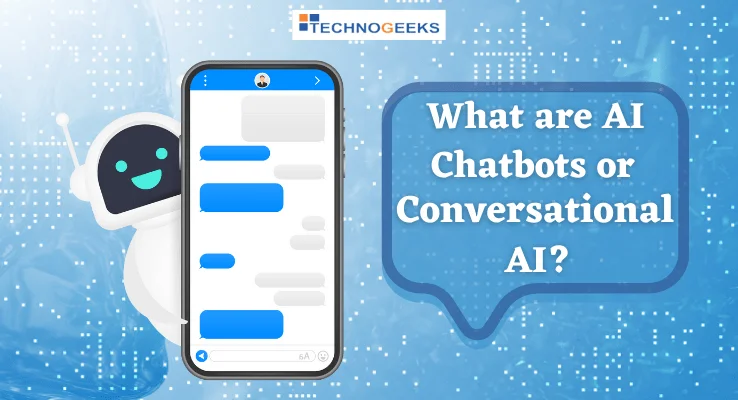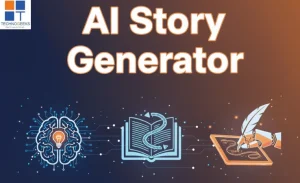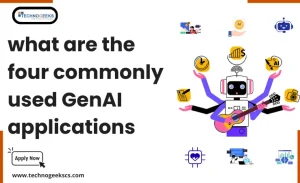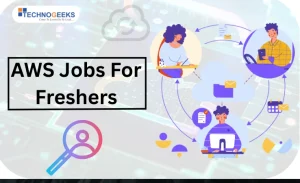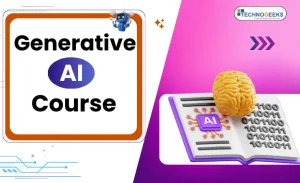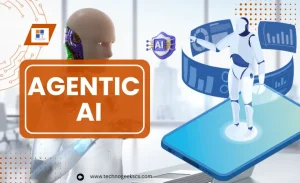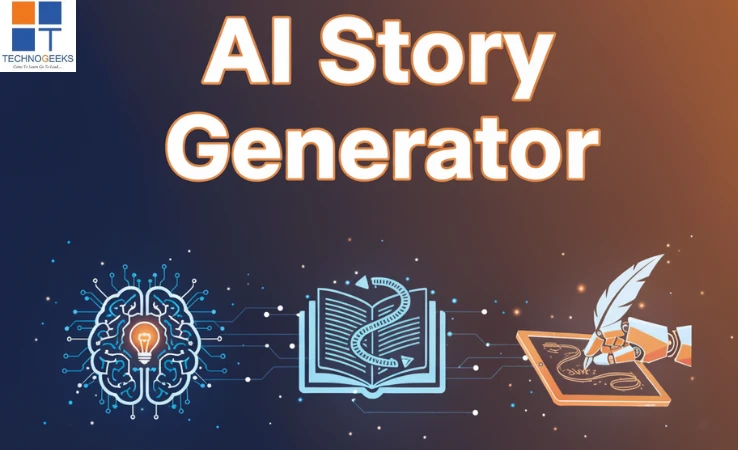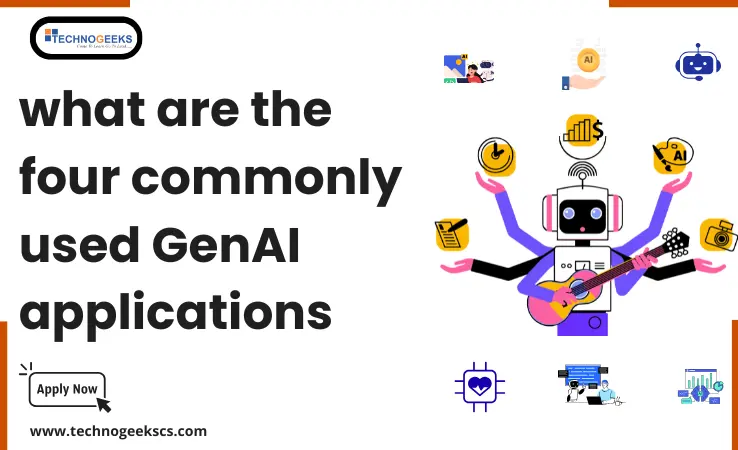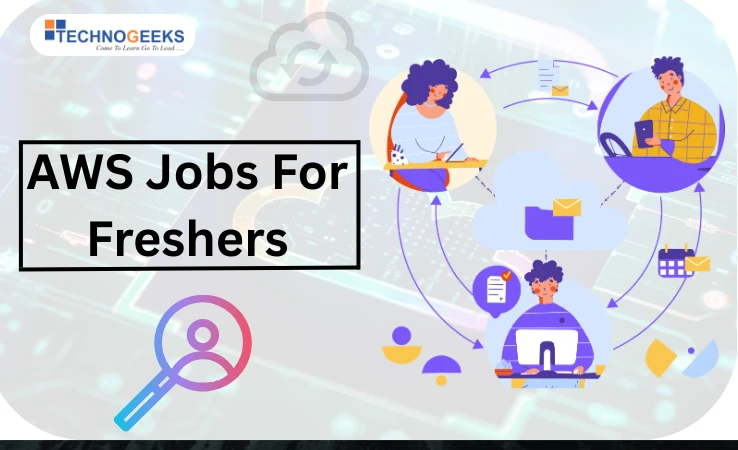Table of Contents
ToggleWhat are AI Chatbots?
As we all know, Artificial intelligence is a very popular and impactful technology that has found applications in multiple fields and industries worldwide. It already has started contributing various aspects of business, health, finance, education and this list goes on.
One of the applications of this AI is Chatbots or conversational AI. This AI chatbot is what you see on most websites nowadays, where you talk to them about your queries. So in this blog, we will try to understand what are these Chatbots? How they are made? and will they replace humans in the future?
“AI is in a ‘Golden Age’ and solving problems that were once in the realm of sci-fi”
– Jeff Bezos
Conversational AI
Conversational AI is the technology that ultimately enables machines to naturally interact with humans via human language. It is a subset of Artificial Intelligence that is built upon concepts like machine learning, Neural Networks. It is used to build important applications like hands-free controls while driving, Siri, Chatbots, etc.
There are two key components of conversational AI
- NLP(Natural Language Processing): It is the ability of AI to extract meaning from the human language, i.e., text or speech.
- The ability to deploy NLP to action: The toolbox that brings AI-powered conversations to life and to get things done.
Chatbots
Chatbots are computer programs created for businesses to have a readily available agent to solve the instant queries of customers.
Chatbots are very useful to businesses as they provide a virtual agent for customers to interact with their technology. The customers, on the other hand, are also satisfied because of the instant service.
Conversational AI Vs Chat bots
| Conversational AI | Chatbots |
| Dialogue based: Conversational AI focuses on Dialogue for better understanding. | Rule based: Chatbots are Rule based, bounded systems whose main focus is to deliver what is asked. |
| Interactive: They are made to converse with humans. | Not Interactive: Made to solve the queries. |
| Understand human intent: They use sentiment analysis to detect human intent and try to adjust the conversations. | Can not understand human intent: Only use limited NLP to understand the query. Mostly the queries are selectable options. |
| Handle human variance: These are made to handle all kinds of responses from humans and help them despite the variance in the queries. | One shot response: Chatbots had the predetermined response ready for every query, so they couldn’t handle the human variance. |
Secret recipe that makes an AI chatbot different from traditional conversational Chatbots.
As we have seen above, the AI Chatbots are different from the traditional ones. Now, let’s see the secret recipe to make them, and how it makes them different.
There are two main ingredients used in this recipe:
- LLM (Large Language models)
- Transformers
What are large language models (LLM)?
Large language models are tools that are developed by machine learning and artificial intelligence researchers to help machine understand natural human language Eg., text and speech. They are used in a bunch of applications like translation, text generation, etc. With Large Language Models, it is possible for a computer to create an image, write articles and also create a program.
- Most common language models include:
- BERT (Developed by Google to understand user intent of search queries)
- GPT- 3 (Developed by OpenAI)
- LAMDA (neural language models developed by Google)
What are transformers?
Transformers were introduced in 2017 by a team at Google Brain and are increasingly the model of choice for NLP problems, replacing RNN models such as long short-term memory (LSTM).
Transformers are breakthrough inventions which lead to the all time fastest growing app that we know as ChatGPT.
Hugging Face has made transformers very easy to use and accessible with their open source machine learning platform.
GPT and Google’s BERT search algorithms are the two most widely used machine learning applications based on Transformer models.
Before transformers were discovered, RNN (Recurrent Neural Network) were popular to deal with text data or any kind of sequential data. But they had two main flaws.
- Whenever a very long sentence was provided, they used to forget the beginning of the data.
- As they were recurring, as given in the name, they could not be parallelized.
Then came the LSTM (Long Short-Term Memory) Neural Networks. They could remember the sentence a little bit longer, but they took too much time to train.
Now we have transformers and their benefits are the following,
- Uses attention: The model pays attention to the most important details to identify the data provided. For example, in a sentence it will only look for the word that makes the most sense.
- No recurrence: The recurrence feature from the RNN was removed from the transformers to use parallel processing.
- Faster to train: Since the model focuses on attention, the training time has become much less.
- Can be parallelized: Since it does not use recurrence, it can be parallelly processed to make it even faster.
Examples of transformer models:
- DALL-E: A recently developed transformer model by open AI uses a variation of GPT-3. It creates images based on text descriptions known as prompts.
- BLOOM: A multilingual open access model.
- GPT3 – Text generating model
- Wu Dao – Chinese AI program (another GPT-like language model)
Current working models of Chatbots
ChatGPT
ChatGPT is a conversational AI chatbot that can generate text for almost any kind of query. You can do anything from writing a poem or rap music to even writing codes for the developer. Its pros and cons are listed below
| Pros | Cons |
| ➤ Great writing skills ➤ Good STEM knowledge ➤ Works on conversational AI ➤ Can generate text, mathematical solutions, and can do coding. | ➤ Unavailable many times due to large user base. ➤ Does not have access to the internet, so you can’t get the latest info on any topic. |
Microsoft’s Bing ChatGPT
Recently Microsoft has developed its own AI improved being which runs on next generation AI LLM model made specifically for the customized searches. It’s currently in the testing phase.
| Pros | Cons |
| ➤ Have access to the internet, therefore can work like a search engine ➤ Able to link back to the sources ➤ Always generates up to date content. ➤ Works on openAI’s GPT3 and 3.5 LLMs | ➤ Does not show full text ➤ Only certain amount of queries are allowed |
Jasper
Jasper is almost the same model as the ChatGPT. It even uses the same language model (GPT3) as that of the ChatGPT. Moreover, it can generate the copies of articles with the vast variety of templates it has, which makes it even more useful for businesses for a certain amount.
| Pros | Cons |
| ➤ Vast range of writing templates ➤ Has copy editing features ➤ Can also check for plagiarism and grammar. ➤ Uses GPT3 model | ➤ Focuses only on written text ➤ It’s not free to use. |
YouChat
This AI chatbot, Youchat, is also like ChatGPT and Jasper, built on the GPT3 model. It can do a vast variety of tasks for free. The best thing of all is, because it lacks popularity, it’s always readily available.
| Pros | Cons |
| ➤ Readily available ➤ Uses GPT3 of OpenAI ➤ Can list the sources. ➤ Free of cost | ➤ UI Doesn’t have appealing aesthetics |
Chatsonic by writesonic
Chatsonic is a very dependable AI because it stays up to date with the current events and it is supported by Google. This feature is not present in any of the above Chatbots since they won’t go past 2021.
| Pros | Cons |
| ➤ It is always up to date ➤ It is supported by google ➤ Aware of current events ➤ Able to use voice dictation | ➤ Has monthly subscription cost ➤ Can not do math. |
Other generations of AI models
- Watson Assistant: Watson Assistant is the most advanced AI-powered chatbot in the market, Built by IBM (one of the leaders in the AI space). It is pre-trained with data from your respective industry so that it could understand your call logs, chat, ask consumers for clarity, connect them with human agents, search for an answer in your data, and provide you with training advice to improve your conversational abilities.
- Rulai: Rulai is an AI chatbot created for businesses. It is powered with the latest deep learning based Natural Language Processing. It can perform multiple tasks like detecting customer intent, moving to different tasks, and performing given tasks.
- Inbenta: Created explicitly for businesses, Inbenta leverages its NLP (Natural Language Processing) engine and machine learning to find the context of each customer dialogue and respond to their queries accurately. It has a dialog manager that helps taking care of the conversation flaws.
- LivePerson: By collecting over 20 years of messaging transcript data and feeding it to the AI Chatbot, LivePerson, it can automate messaging for every industry and integrate with messaging channels such as mobile apps, websites, text messaging, Apple business chat, Line, Whatsapp, Google, Facebook Messenger, Google AdLingo and Google Rich Business messaging.
- Bold360: Bold360 patented its NLP engine to allow brands to develop Chatbots that can understand the customer’s intent without the requirement of keyword matching and know how to provide the most accurate answers. It can interpret complicated language, respond to customers with natural responses, and remember the context of the conversation.
Opportunities and challenges
Now let’s see the effects of deploying the AI ChatBot into different businesses.
- Improved end-user experience: Chatbots provide real-time support in any kind of business. Since the customers can get their queries answered any time they want, their satisfaction rate gets increased over time.
- Increased face-time with customers: Businesses use the Chatbots to increase their face-time with the customers. Nowadays customers want to have a more personalised experience with their favorite brands. The AI Chatbots can even be integrated with the social media sites. So they provide just the experience the customers want, increasing the engagement.
- Analytics and insights: ChatBot AIs gather the behavior insights through interacting with the customers on a regular basis. This data is very important for the businesses to make important decisions based on the demand and the purchase patterns.
- Lead generation and conversion: The chatbot has all the users information, and insights about the services and products. With this data, Chatbot uses focused messaging to help customers through their purchasing journey. It is also possible to persuade and influence the customers.
- Cost saving: For businesses it is much easier to build and maintain an AI chatbot than to build and maintain an entire platform.
There are four biggest challenges that are encountered while developing a ChatBot.
- Context in ChatBot: The chatbot evolves with the meaningful conversation they have with humans. But humans don’t interact in a defined order, which results in intelligent slot filling. That means all the responses with the same meaning are stored next to each other, increasing memory consumption.
- Limited user attention: Customers have a very low attention span. It’s quite difficult to build a chatbot that will take care of this problem. Conversational AI comes to the rescue here. With the next generation LLM and Transformer modules, it can hold conversations like a human.
- Chatbot Testing: ChatBot testing, though it doesn’t look like much, is a serious issue. AI Chatbots are constantly evolving with the upgrades in NLP and LLM modules. Hence it is necessary to test it’s capabilities and accuracy with every upgrade.
- Viability of data: Only a tiny amount of data is useful for a business/organization in the vast amount of available data. The data provided to the AI ChatBot should be meaningful and in context with the respective organization. Otherwise the AI becomes useless even with all the data fed to it.
Productivity boost: positive & negative
AI Chatbots are already being used in the businesses to better understand the market and increase their productivity. Let’s see what kind of positive and negative impacts it can have on productivity.
Positive Impact:
- Google alternative for research: The problem with the google search engine is that it has too much data to provide. But the AI Chatbots can provide data specific to the queries
- Improve writing skills: The AI Chatbots can be used for writing essays, letters, emails, and speeches. UPenn professor Ethan Mallick said that he is requiring his students to use ChatGPT. He thinks that the students can generate great ideas with it.
- Coding assistant: Many of the Chatbots can be used to help the programmers. They can use it to get the coding approach and also try to build more efficient codes with it.
- Scheduling tasks, planning, and time management: Managing and organizing your busy schedule has been made much easier by these AI Chatbots.
- Second opinion: while making the important decision in a business, the Chatbots can be used to get the second opinion since it has all the historical data.
Negative Impact:
- Impact on education quality: the quality of education is affected if the model is not properly trained with meaningful data.
- Misinformation: Almost all of these Ai Chatbots are not up-to-date with the current events. So it will show the past information on the queries and in some cases it may lead to misinformation.
- Limited contextual understanding: Chatbots most of the time cannot understand the context of the queries due to the variance in human language. In the presence of idioms and phrases in the queries, the chatbot may show trash content.
- Revenue impact cycle: Since Chatbots have access to the big news sites, their revenue drops down. When that happens, these sites will block the access of the Chatbots. Because of this, the Chatbots will not be up to date, and in turn will provide misinformation.
Pandora’s box & ethical Questions
Pandora’s box is a metaphor for an action that may seem small or harmless, but ultimately has far-reaching and unexpected consequences. Conversational AI also poses multiple ethical questions that can be considered a ‘Pandora’s Box’.
- Privacy: Chatbots often collect personal information from users in order to improve their responses. This data can be misused.
- Bias: Chatbots are only as objective as the data they are trained on. If this data is biased, the chatbot’s responses may also be biased, potentially perpetuating harmful stereotypes or discrimination.
- Manipulation: Chatbots can be designed to influence or manipulate users, for example by using persuasive language or withholding information.
- Responsibility: In the future, as AI becomes more advanced, humans will rely on it to make decisions. At that time the question of responsibility arises when things go wrong.
- Transparency: It is important to supply the right information to the Chatbots. Users can make wrong decisions based on wrong information.
“Artificial Intelligence has the same relation to the intelligence as artificial flower has to the flower”
– David Parnas
The first question that everybody has about AI is that is it a threat? As per the quote above, artificial intelligence is not intelligence, and it’s not artificial consciousness. So it won’t just wake up one day and decide to take over the world.
The second question that arises is, will it replace our jobs? The simple answer is … No (Not at least for a time). The AI can definitely generate great text based content, perform repetitive tasks, but the content, as we have seen above, can be of average quality and it will always depend on the prompts of users and the data it trained on. So it is great for helping but it can’t do the tasks completely on its own.
So in conclusion:
It is important to acknowledge the potential risks of conversational AI Chatbots, while also recognizing the many benefits they can bring. By working together, we can create Chatbots that are both effective and ethical.
Write your thoughts below in comments on AI Chatbots and the revolution they will bring to our life.
Technogeeks is an excellent learning platform for mastering Data Science. Enroll to kickstart your journey as a Data Scientist.
Checkout our course on the Data Science. Click on the link below 👇


